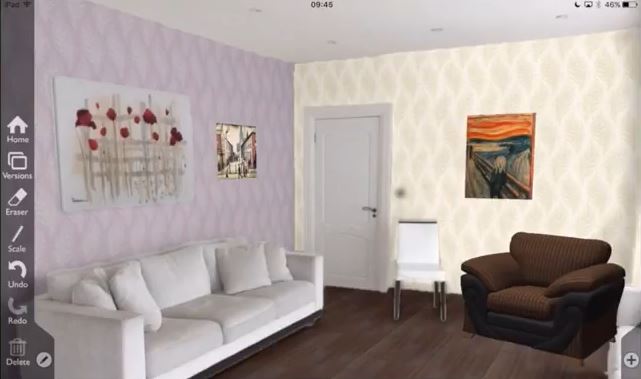A few years ago I redecorated my house and experienced first-hand what those in the home décor industry call the ‘imagination gap’: the inability to imagine what new home furnishing will actually look like in your own home. It’s a problem that retailers have tried to solve digitally, most commonly with pretty lame first-generation mobile apps that use Augmented Reality (AR).
Enter DigitalBridge, a U.K. startup based in Manchester and backed by John Lewis via the 150 year-old apartment store’s accelerator. The company is taking a different and deceptively more simple approach.
Its tech, which can be integrated into a retailer’s existing website, uses computer vision and machine learning to let you take a photo of your room and remove furniture, wallpaper and other home décor, and replace them with items from a retailer’s catalogue.
“It’s a £1 billion problem in the U.K. with over a third of people who are planning on decorating their room not doing so as there is no such thing as an ‘Undo’ button in interior design,” says DigitalBridge founder David Levine.
“We have built a computer vision and machine-learning platform that allows a user to take a picture of their room with their phone and automatically recognise the walls, floors, ceilings, objects and lighting conditions in those rooms. We then allow the user to render wallpapers, carpets, paints, artwork and furniture in that room”.
Unlike competitors, of which there are many, AR isn’t something DigitalBridge currently uses. “AR is a great technology but requires a dedicated mobile app which all retailers dislike,” says Levine.
“Apps are expensive to build, maintain and are disruptive to the buying journey. Our platform natively integrates to a retailer’s responsive website so can be used on mobile, tablet and desktop”.
The DigitalBridge founder and CEO says that, as a B2B SaaS company, the startup’s target customers are home décor retailers such as John Lewis, DFS, B&Q, IKEA, Home Depot, etc., whilst end users are just about anybody who is remodelling their home or purchasing new furnishings.
The startup makes money each time an end-user uploads a picture of their room via integration with DigitalBridge’s API or white label solution.
In addition to John Lewis, DigitalBridge’s backers include lead investor L Marks, Graham Clempson, and Mike McGrath. The company has raised £700,000 in total.
